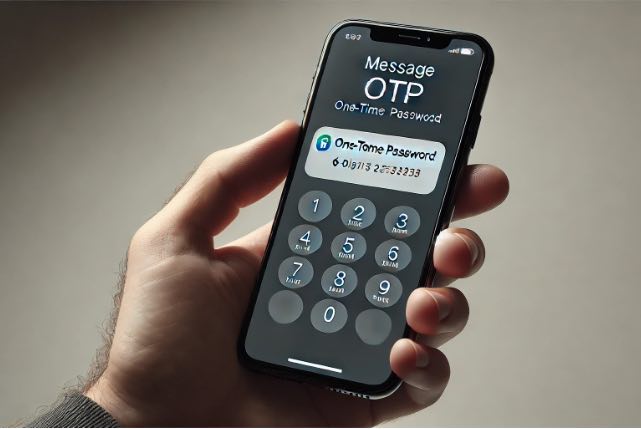Multi-factor authentication (MFA) has long been considered a strong defence against account takeovers. However, recent developments in the cybercrime world reveal that MFA is increasingly vulnerable to sophisticated attack methods.
The Rise of AI-Powered Phone Scams
A Kaspersky article exposes a disturbing trend: the rise of OTP bots. These automated tools trick users into revealing their one-time passwords (OTPs) through social engineering. But the threat is evolving further with the integration of AI.
Consider Lucy, an AI phone assistant. While Lucy is designed for legitimate business use, similar AI technology in the hands of cybercriminals presents a significant threat. These AI-powered systems can:
- Make convincing, natural-sounding phone calls
- Adapt their conversation based on user responses
- Mimic accents and speaking styles to match the impersonated organisation
Imagine receiving a call from your "bank", where an AI assistant fluently explains a supposed security issue and persuades you to provide your MFA code. The natural flow of conversation and ability to answer questions make these AI-driven attacks far more convincing than traditional robocalls.
The OTP Bot Attack Flow
Here's how a typical AI-enhanced OTP bot attack might unfold:
- Attackers obtain working login credentials, either by testing breached credentials via credential stuffing, dark web purchases, or phishing attacks.
- They attempt to log into the victim's account, triggering an OTP request.
- An AI-powered OTP bot calls the victim, impersonating a legitimate organisation.
- The AI engages in a natural conversation, explaining why the OTP is needed.
- The unsuspecting victim provides the OTP during the call.
- The code is relayed to the attacker, granting them access to the account.
The Role of Residential Proxies
Another tool in the cybercriminal's arsenal is the use of residential proxies. These are IP addresses assigned to homeowners by Internet Service Providers, which are then sold or leased for use by third parties. Residential proxies pose several challenges in the fight against account takeovers:
- Legitimacy: Traffic from residential proxies appears to come from real homes, making it harder to distinguish from legitimate user activity.
- Geolocation bypassing: Attackers can choose proxies in the same city or country as the account holder, bypassing location-based security checks.
- IP rotation: Large pools of residential proxies allow attackers to constantly switch IP addresses, evading traditional rate limiting and IP blocking measures.
The use of residential proxies makes credential stuffing attacks more effective, as it becomes much more challenging to identify and block malicious login attempts based on IP address alone.
A Multi-Layered Security Approach
To combat these evolving threats, businesses need a multi-layered approach that goes beyond MFA. Here are key defences to implement:
1. Advanced Rate Limiting
Peakhour's Advanced Rate Limiting offers a solution that can counter the challenges posed by residential proxies. It can limit requests based on:
- HTTP/2 and TLS fingerprints
- Autonomous System Numbers (ASNs)
- Countries
- Custom combinations of request headers
This approach allows businesses to identify and block suspicious activity even when it's distributed across multiple residential IP addresses.
2. Bot Management
Peakhour's Bot Management solution uses a multi-layered approach to detect and mitigate bot traffic:
- Machine learning algorithms to identify bot behaviour.
- JavaScript challenges to verify human interaction.
- Device fingerprinting to track suspicious patterns.
- Integration with threat intelligence feeds.
- Per request residential proxy detection to turn attacker's biggest weapon against themselves.
These techniques can help identify automated attacks, even when they're coming from residential proxy networks.
3. Monitoring and Anomaly Detection
Continuous monitoring of login attempts and user behaviour is crucial. Look for:
- Sudden spikes in login attempts
- Logins from unusual locations or devices
- Use of passwords known to be compromised
- Unusual patterns in successful logins followed by immediate password or email changes
Peakhour's solutions provide real-time analytics and alerting to help businesses spot these anomalies quickly.
4. Account Protection
Peakhour's Account Protection offers a comprehensive approach to securing user accounts:
- Proactive blocking of requests from known malicious sources
- Detection of credential stuffing and brute force attacks
- Integration with Have I Been Pwned to check for compromised passwords
- Custom rules to adapt to specific security requirements
5. User Education
While technical measures are crucial, user education remains an important line of defence:
- Teach users about the risks of providing OTPs over the phone
- Encourage the use of authenticator apps instead of SMS-based MFA
- Promote the use of password managers to encourage unique, strong passwords for each account
Final Thoughts
AI-powered phone scams and the use of residential proxies present significant challenges to traditional security measures, including MFA. While MFA remains a valuable security tool, it's clear that it cannot stand alone in the fight against account takeovers.
By implementing a layered security approach that includes advanced rate limiting, bot management, continuous monitoring, and comprehensive account protection, businesses can create a more robust shield against these sophisticated attacks. Combined with ongoing user education, these measures provide a strong defence against the evolving tactics of cybercriminals.
Remember, security is not a one-time implementation but an ongoing process. Stay informed about the latest threats and regularly review and update your security measures. Your users' accounts – and your business's reputation – depend on it.







